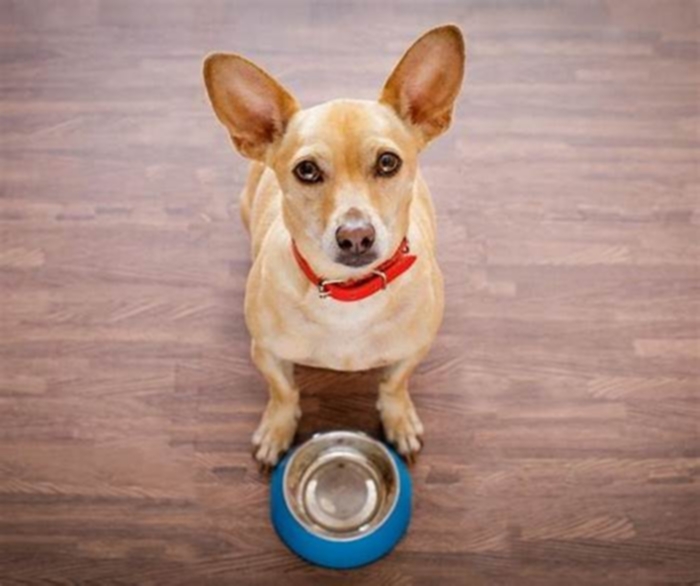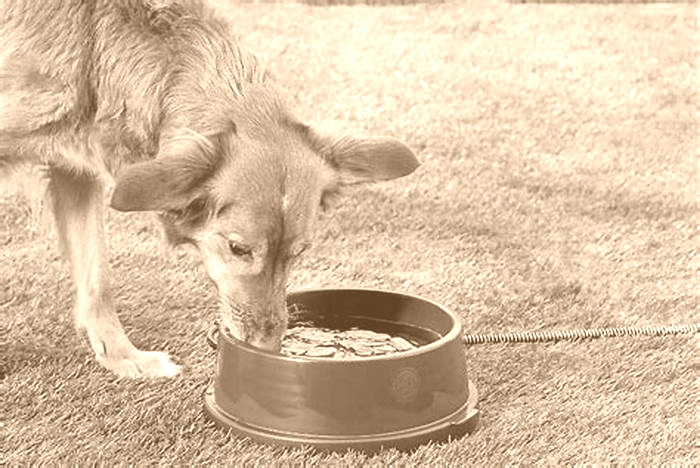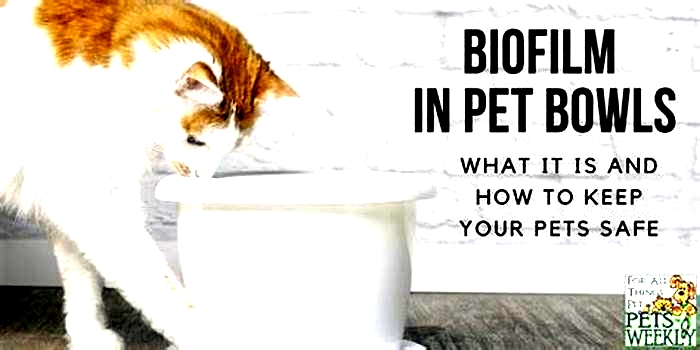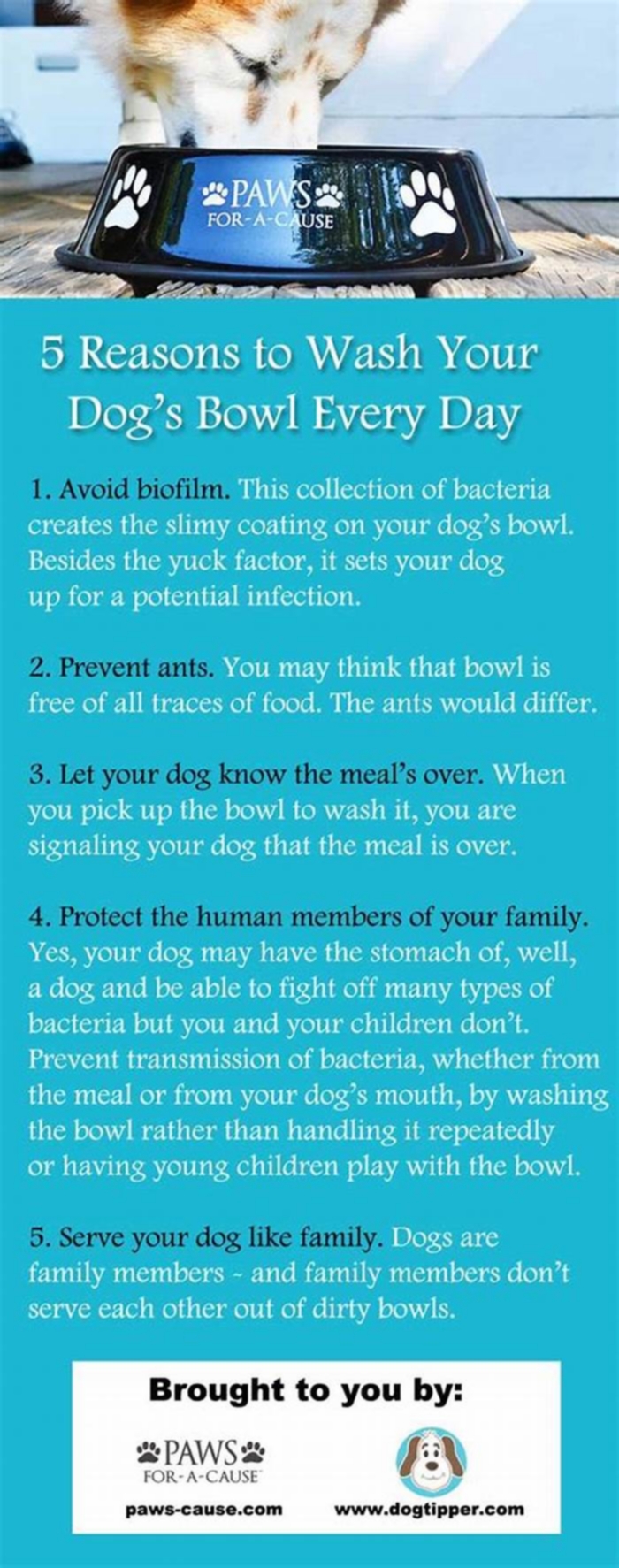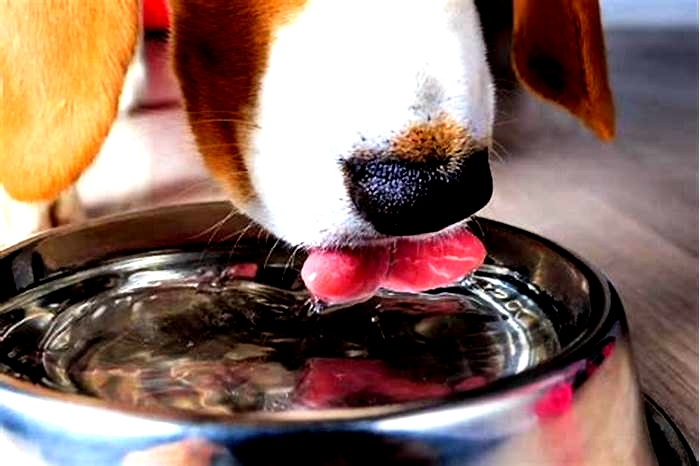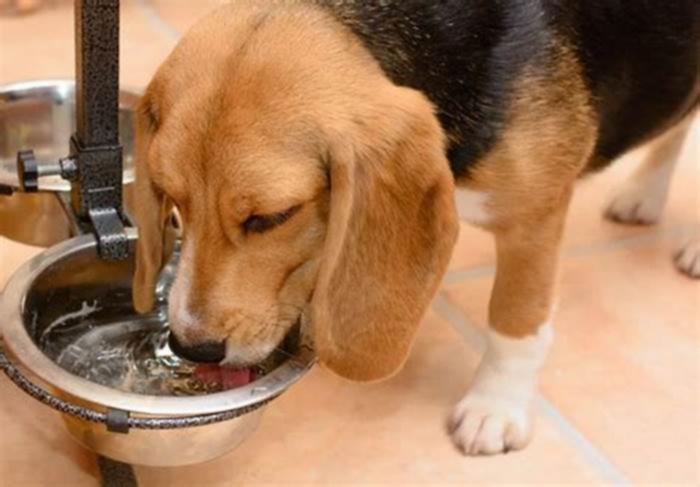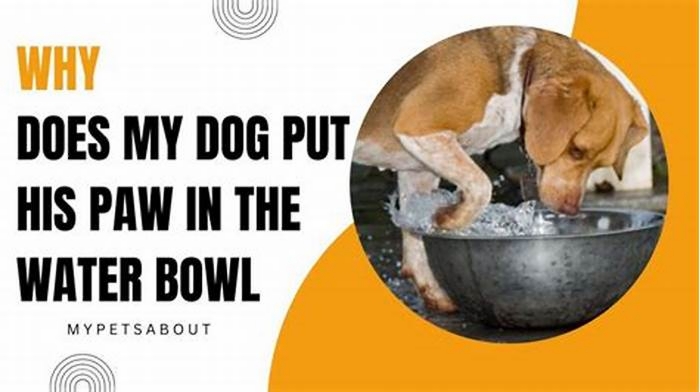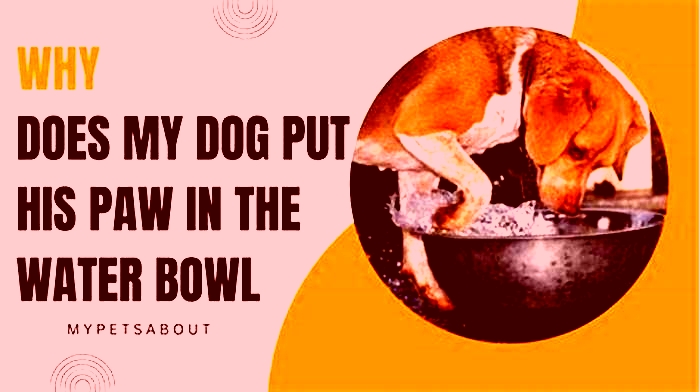How to keep dog water bowl from getting slimy
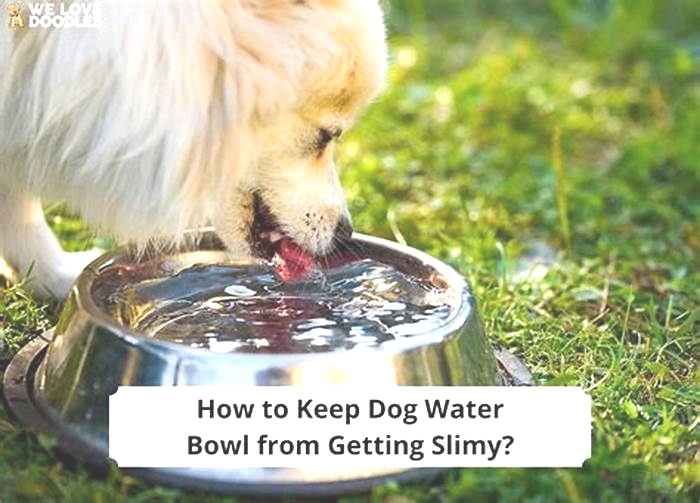
How to Keep Dog Water Bowl From Getting Slimy: Useful Tips
Are you tired of dealing with a slimy dog water bowl that seems impossible to keep clean? Maintaining a fresh and hygienic water bowl for your furry friend is crucial for their health and well-being.
By following a few simple yet effective tips, you can easily prevent that slimy buildup and ensure your dog always has clean water to drink.
Key Takeaways
- Change water daily and clean with hot water to prevent slimy buildup
- Use stainless steel or ceramic bowls to discourage biofilm formation
- Wipe the bowl between refills to maintain cleanliness and hygiene
- Weekly bleach rinse sanitizes the bowl and eliminates harmful bacteria
Reasons for Slimy Dog Water Bowls
If youve ever wondered why your dogs water bowl gets slimy, its likely due to the formation of biofilm, a thin layer of bacteria that can harbor harmful pathogens. When you neglect to clean your dogs water bowl regularly, biofilm thrives, creating an ideal environment for bacteria like Listeria and E. coli to grow and pose potential health risks to your furry friend. The slippery film you see in the water bowl indicates the presence of thriving bacterial colonies that can lead to infections if consumed by your dog.
To prevent biofilm buildup and keep your dogs water bowl clean, its essential to clean it properly with hot soapy water. Failing to change the water daily and clean the bowl allows biofilm to develop, making it slimy and potentially dangerous for your pet. By maintaining a routine of thorough cleaning and regular water changes, you can ensure a safe and hygienic drinking environment for your beloved canine companion.
Tips to Prevent Biofilm Formation
To maintain a clean and hygienic environment for your dogs water bowl, implementing simple yet effective strategies can help prevent the formation of slimy biofilm. Changing your dogs water daily is crucial in preventing biofilm buildup.
Wiping the water bowl with a paper towel after each refill can help remove potential biofilm, while cleaning it daily with hot water and natural soap will prevent slimy residue. To further combat biofilm, sanitize the bowl weekly with a bleach rinse to eliminate harmful bacteria.
Opting for stainless steel or ceramic bowls instead of plastic can also reduce biofilm formation. Remember, bad biofilms not only create slime but also harbor bacteria that can be harmful to your furry friend.
Rinse thoroughly, change water regularly, and follow these tips to stop biofilm in its tracks and keep your dogs water bowl clean and safe.
Best Materials for Dog Bowls
Wondering what materials are best for your dogs water bowl to ensure cleanliness and hygiene? When choosing the right material for your dogs water bowl, consider the following options:
- Stainless Steel: Stainless steel bowls are non-porous, making them resistant to bacterial growth. Theyre easy to clean and maintain, providing a hygienic environment for your furry friend.
- Ceramic: Ceramic bowls are another excellent choice as theyre also easy to clean and maintain hygiene. Theyre sturdy and less prone to bacterial buildup compared to plastic bowls.
- Copper: Copper bowls have antimicrobial properties that can help prevent slime formation and promote a cleaner water bowl.
Opting for high-quality materials like stainless steel, ceramic, or copper can significantly reduce the risk of bacterial contamination and ensure your dog always has a clean water bowl to drink from. Choose wisely to keep your dog healthy and happy.
Cleaning and Disinfecting Strategies
For optimal cleanliness and hygiene, implementing effective cleaning and disinfecting strategies is essential for maintaining your dogs water bowl. When it comes to pet bowls, particularly water bowls, preventing slimy buildup is crucial. Consider using stainless steel or ceramic bowls as they are less prone to biofilm formation compared to plastic bowls. To keep the water bowl clean and free from slime, make sure to clean it daily with hot water and natural soap. Additionally, wiping the bowl with a paper towel between refills can help maintain its cleanliness. A diluted bleach rinse on a weekly basis is recommended to effectively sanitize the bowl and eliminate any lingering bacteria. Remember, changing the water daily is key to preventing bacterial growth and the development of slimy residues in your dogs water bowl.
| Strategies | Frequency | Recommended Action |
|---|---|---|
| Daily Cleaning | Daily | Wash with hot water and natural soap to prevent slimy buildup |
| Diluted Bleach Rinse | Weekly | Sanitize effectively for optimal cleanliness |
| Stainless Steel/Ceramic Bowls | N/A | Choose over plastic to discourage biofilm formation |
| Wiping Between Refills | As needed | Use a paper towel to maintain cleanliness |
| Changing Water | Daily | Essential to avoid bacterial growth and slimy residues |
Importance of Regular Maintenance
Regular maintenance of your dogs water bowl is essential to prevent the formation of slimy biofilm and ensure your pets health and well-being. Heres why maintaining your pets water bowl is crucial:
- Preventing Bacterial Growth: Regular cleaning helps prevent the buildup of biofilm, which can harbor harmful bacteria like Listeria and E. coli. These bacteria pose health risks to your pet if not cleaned regularly.
- Ensuring Hygiene: Changing the water daily and cleaning the bowl with hot water and soap is vital for preventing slime accumulation. Neglecting regular maintenance can lead to infections and gastrointestinal issues for your pet, impacting their overall health.
- Reducing Health Risks: Consistent cleaning routines create a hygienic environment for your pet and reduce the risk of biofilm formation. By prioritizing maintenance, you safeguard your pets well-being and minimize the chances of bacterial contamination in their water bowl. Proper upkeep is key to a healthy and happy pet.
Frequently Asked Questions
How Do I Prevent Mucus in My Dogs Water Bowl?
To prevent mucus in your dogs water bowl, clean it daily with hot soapy water, opt for stainless steel or ceramic bowls, change water daily, and sanitize weekly with a diluted bleach solution. These steps maintain a clean bowl for your pup.
How Do You Keep Slime Out of a Dogs Water Bowl?
To keep slime out of your dogs water bowl, change the water daily, wipe it with a paper towel after refills, and clean with hot water and mild soap. Opt for stainless steel or ceramic bowls and sanitize weekly with a diluted bleach solution.
How Do I Prevent Biofilm in My Dogs Water Bowl?
To prevent biofilm in your dogs water bowl, change the water daily, wipe the bowl after refills, clean it with hot water and soap daily, and sanitize weekly with diluted bleach. Opt for stainless steel or ceramic bowls to reduce biofilm formation.
What Can I Put in My Dogs Water to Keep It From Getting Slimy?
To keep your dogs water bowl from getting slimy, try adding apple cider vinegar, lemon juice, or a pinch of sea salt. These natural options can help prevent buildup and maintain water clarity. Experiment with different flavors like mint or cinnamon for added benefits.
Conclusion
In conclusion, maintaining a clean and slime-free water bowl for your dog is crucial for their health and well-being.
By following a regular cleaning routine, choosing the right materials, and using proper disinfecting techniques, you can ensure that your furry friend always has fresh and safe drinking water.
Remember, a little effort in keeping the water bowl clean goes a long way in keeping your dog happy and healthy.
Why Is My Dog's Water Bowl Slimy?
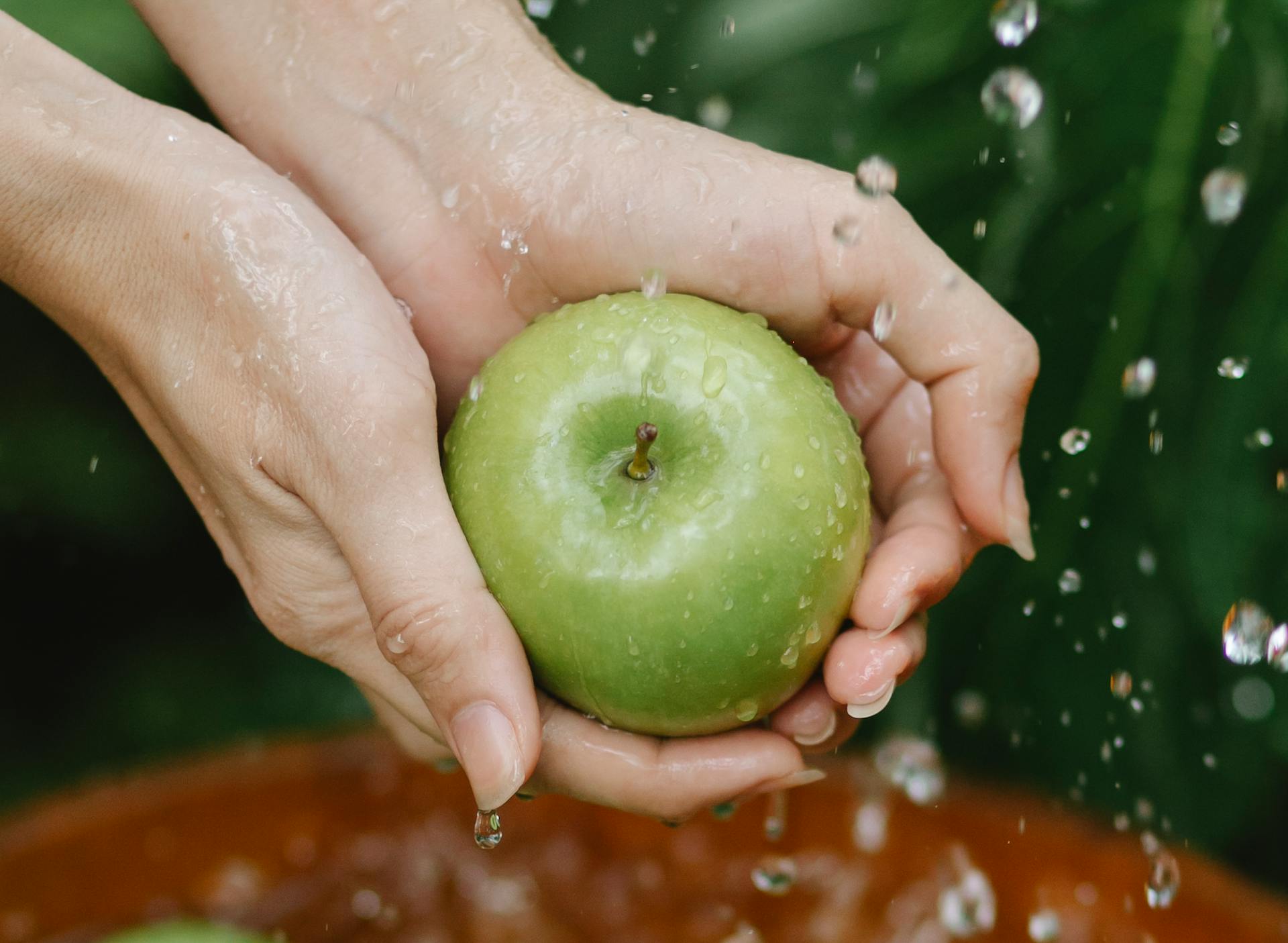
There are a few possible reasons why your dog's water bowl might be slimy. One possibility is that your dog has been licking the bowl and it has become covered in saliva. Another possibility is that you have not been cleaning the bowl regularly and it has become dirty. If the bowl is made of plastic, it is also possible that it has become scratched and bacterial growth is occurring in the scratches. No matter what the cause, it is important to clean your dog's water bowl regularly to prevent bacterial growth and to keep your dog healthy.
Your dog's water bowl might be slimy because your dog has been licking it and it has become covered in saliva. Dogs typically like to lick their bowls because they enjoy the taste of water or because they are trying to get every last drop of water out of the bowl. If your dog's water bowl is made of plastic, it is also possible that it has become scratched and bacterial growth is occurring in the scratches. No matter what the cause, it is important to clean your dog's water bowl regularly to prevent bacterial growth and to keep your dog healthy.
How can I clean my dog's water bowl to get rid of the sliminess?
Even if you clean your dog's water bowl every day, it can become slimy over time. This is because bacteria builds up on the bowl and forms a slime.
To clean the bowl and get rid of the slime, you will need to disinfect it. You can do this by using a bleach solution. First, make sure to rinse the bowl out with water. Then, mix together one tablespoon of bleach with one gallon of water. Soak the bowl in this solution for five minutes. After five minutes, rinse the bowl off with clean water.
If you do not want to use bleach, you can also use vinegar to disinfect the bowl. First, rinse the bowl out with water. Then, mix together one cup of vinegar with one gallon of water. Soak the bowl in this solution for five minutes. After five minutes, rinse the bowl off with clean water.
You should disinfect your dog's water bowl at least once a week to prevent the slime from building up.
What causes sliminess in my dog's water bowl?
There could be a few reasons why your dog's water bowl is slimy. If the bowl is made of metal, it could be that the metal is starting to corrode. This would be more likely if the bowl is kept outside or if it is not cleaned often. If the bowl is made of plastic, it could be that bacteria are growing in the water. This would be more likely if the water is not changed often or if the bowl is not cleaned often. Another possibility is that there is something in the water that is making it slimy. This could be something like algae or soap. If you are concerned about the sliminess in your dog's water bowl, it would be best to take it to a vet to rule out any potential health issues.
Is there anything I can do to prevent my dog's water bowl from getting slimy?
There are a few things you can do to prevent your dog's water bowl from getting slimy. The first thing is to make sure that you clean the bowl regularly. You can use a mild soap and water to do this. You should also rinse the bowl well after cleaning it.
Another thing you can do is to add a little bit of vinegar to the water bowl. This will help to kill any bacteria that may be present in the water. You should also make sure that you change the water in the bowl regularly.
If you follow these tips, you should be able to keep your dog's water bowl clean and free of slime.
How often should I clean my dog's water bowl to prevent sliminess?
It's important to keep your dog's water bowl clean to prevent the build-up of slimy bacteria. Depending on the size of your dog's bowl, you should clean it at least once a week with hot, soapy water. If you have multiple dogs, you may need to clean the bowl more often.
Bacteria can multiply quickly in warm, moist environments, so it's important to clean your dog's bowl regularly. If the bowl is very slimy, you may need to clean it more than once a week.
There are a few things you can do to prevent sliminess in the first place. First, make sure you're using a high-quality dog bowl that is made of non-porous material. Second, don't overfill the bowl so that water isn't sitting in it for long periods of time. And finally, rinse the bowl out with hot water after each use.
If you follow these tips, you can help prevent the build-up of slimy bacteria in your dog's water bowl.
What are the consequences of not cleaning my dog's water bowl regularly?
When it comes to not cleaning a dog's water bowl, the consequences can be both serious and minor. On the more serious side, if the bowl is not cleaned and disinfected regularly, it can become a breeding ground for bacteria, which can make your dog sick. In severe cases, this can lead to gastrointestinal problems, including vomiting and diarrhea. Additionally, if the bowl is not cleaned often enough, it can become stained and develop an unpleasant odor.
On a less serious note, not cleaning your dog's water bowl can simply make it less pleasant for both you and your dog to use. If the bowl is dirty, your dog may not want to drink from it, and you may not want to fill it up. Additionally, a dirty water bowl can be unsightly and may take away from the overall cleanliness of your home.
In short, it is important to clean your dog's water bowl regularly to avoid both serious and minor consequences. By taking this simple step, you can help keep your dog healthy and your home clean.
What are some tips for cleaning my dog's water bowl to prevent sliminess?
It's no secret that dog water bowls can get pretty slimy. Even if you're diligent about cleaning them, you may notice a buildup of residue over time. Thankfully, there are some easy tips you can follow to help keep your dog's water bowl clean and prevent sliminess.
1. Clean the bowl regularly. Just like with anything else, the key to preventing sliminess is to keep things clean. Wash your dog's water bowl weekly with hot, soapy water. Rinse it well and dry it completely before adding fresh water.
2. Avoid using scented or tinted cleaners. These can leave behind residues that can contribute to sliminess. opt for plain, unscented soap and hot water instead.
3. Use a vinegar solution. If you notice that your dog's water bowl is starting to get slimy, you can use a vinegar solution to help clean it. Mix equal parts water and vinegar in a bowl and use a clean cloth to scrub the bowl. Rinse it well with hot water and dry it completely.
4. Bring it outside. If your dog's water bowl is made of metal or ceramic, you can bring it outside and clean it with a hose. This will help remove any stubborn residue. Just be sure to rinse it well with hot water afterwards and dry it completely.
5. Invest in a self-cleaning bowl. If you're tired of constantly cleaning your dog's water bowl, you may want to invest in a self-cleaning bowl. There are a few different brands on the market, and they use UV light or filtration to clean the water automatically.
Following these tips can help you keep your dog's water bowl clean and prevent sliminess.
What are some common myths about slimy water bowls for dogs?
There are a lot of misconceptions about slimy water bowls for dogs. Some people think that the slime is harmful to their dog, while others believe that it can actually be beneficial. Let's take a look at some of the most common myths about slimy water bowls for dogs.
Myth #1: Slimy water bowls are harmful to dogs
This is one of the most common myths about slimy water bowls for dogs. Many people believe that the slime is harmful to their dog and can cause them to become sick. However, there is no scientific evidence to support this claim. In fact, slimy water bowls can actually be beneficial for dogs. The slime can actually help to keep your dog's bowl clean and free of bacteria.
Myth #2: Dogs don't like slimy water bowls
Another common myth about slimy water bowls for dogs is that dogs don't like them. This is simply not true. Dogs actually enjoy drinking from slimy water bowls. The slime helps to keep the water cool and refreshing, which is perfect on a hot day.
Myth #3: Slimy water bowls are difficult to clean
Another myth about slimy water bowls for dogs is that they are difficult to clean. This is not the case at all. In fact, slimy water bowls are actually very easy to clean. All you need to do is rinse them out with warm water and soap.
Myth #4: You shouldn't feed your dog from a slimy water bowl
Another myth about slimy water bowls for dogs is that you shouldn't feed your dog from them. This is also not true. If you have a dog that is prone to getting sick, it is actually better to feed them from a slimy water bowl. The slime will help to keep the food clean and free of bacteria.
Myth #5: All slimy water bowls for dogs are the same
One final myth about slimy water bowls for dogs is that all of them are the same. This is not the case at all. There are actually many different types of slimy water bowls for dogs. Some are made from ceramic, while others are made from stainless steel. There are even some that are made from glass. No matter what type of slimy water bowl you choose, it is important to make sure that it is the right size for your dog. You also want to make sure that it has a good seal
What is the best way to clean my dog's water bowl to prevent sliminess?
There are a few different things you can do to clean your dog's water bowl and prevent sliminess. First, you can use dish soap and water to wash the bowl. You can also add a bit of vinegar to the water to help kill any bacteria. Another option is to use a bleaching solution, but be sure to rinse the bowl well afterwards. You can also use a commercial pet bowl cleaner, which can be found at most pet stores. Finally, you can simply rinse the bowl with hot water after each use.
Frequently Asked Questions
How to keep your dogs water dish clean?
1. Beware of Glass Bowls. Do not use glass bowls outside on wooden decks as they not only can heat up to the point of breaking, which the broken glass could then potentially ...
How do you sanitize the inside of a bowl?
We would be very concerned about disinfecting while cleaning.
How to clean your dogs Food and water bowls?
1. Wet the bowl and scrub with a soapy cloth.2. Rinse the bowl and dry it off.3. Reapply a light coating of soap to the bowl if needed and rinse again.
Can I wash my dog's food in the dishwasher?
Yes, you can wash your dog's food in the dishwasher. The water gets hot enough (140 degrees F/60 degrees C) to remove and kill bacteria.
How to keep algae out of Dog Water Bowls?
If you want to keep algae and bacteria out of your dogs water bowl, use a scrubbing brush. This will remove built-up dirt and grime which can foster the growth of algae. Additionally, Be sure to replace the brush every few months to maintain its effectiveness.
Lola Rowe is an experienced blogger who has been writing for several years. Her blog posts cover a wide range of topics, including lifestyle, beauty, and travel.With a passion for exploring new places and experiencing different cultures, Lola loves to travel whenever she gets the chance.
View Lola's Profile
